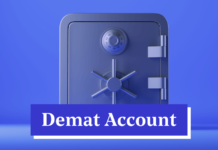The practice of keeping tabs on workers wasn’t as common as it is now. Methods for keeping tabs on workers are evolving in tandem with technological capabilities. Companies can now keep an eye on emails, phone calls, app and website usage, and even keystrokes. Some private surveillance firms even record their employees’ screen activity and provide remote access to their laptops. Concerning employee monitoring, what is the relevance of privacy? Absolutely everything. Privacy, employee engagement, happiness, and other factors are all impacted in unique ways by surveillance. This article is all about the factors.
How does employee monitoring affect workplace privacy?
Because it is dependent on so many things, there is no one correct response to this issue. Everything hinges on the specifics of how businesses implement employee monitoring systems, the data they gather, and the methods they use to analyse it. Nearly two-thirds of workers are worried about the potential misuse of their personal information, according to a recent survey. A recent survey found that 64% of employees are concerned their employee data will be misused.
Good news for the 30% of businesses who are certain they are utilising workforce data responsibly: employees are happy to be monitored, especially if it benefits them. Employers need to provide workers access to their data if they want their trust and want to use monitoring technologies legally. Also, workers need greater leeway to make their own choices. Really, it’s not complicated at all: employers need to provide the employee something in exchange for the data.
Employee Monitoring and Privacy Around the World
Businesses may more easily recruit workers from all over the globe. 43 percent of American workers currently do some remote work. Knowing this, it’s safe to assume that your organisation currently employs remote workers in faraway lands. It is important to examine the local legislation when thinking about employee monitoring software.
According to data collected last year, the US and Australia have the smallest compliance resource requirements for full-suite personnel monitoring systems. However, more stringent regulations, standards, and security measures would be required to supervise an employee in Finland or Italy. You should absolutely engage a team of legal professionals before you start monitoring, as breaking privacy regulations leads to hefty fines. Depending on what it is you intend to keep tabs on, the rules change as well. Call monitoring is legal in some nations but illegal in others. Regarding private conversations, keyloggers, GPS, etc., the same holds true.
Do’s and Don’ts of Employee Monitoring
- Before implementing employee monitoring software, there are a number of things to think about. Furthermore, to guarantee the support of both management and staff, there are best practices to adhere to.
- Never sneak in surveillance software without your workers’ consent. Surveillance of an individual without their knowledge is against the law in the majority of nations, and in other cases, explicit written permission is required. Inquire with a legal team regarding the local regulations regarding surveillance, privacy, recording, etc.
- Gather your whole team together before installing the software, and spend as much time as necessary explaining the product’s purpose, the data it will collect, and how you will put it to use. To keep your employees’ trust, you must communicate openly with them.
- Don’t gather information that isn’t necessary. Logging keystrokes and mouse clicks is unnecessary if all you want to do is monitor app and website usage. Aside from the obvious security risks, having too much data is useless. Hire a dedicated implementation team to look into employee monitoring software, negotiate pricing, and set everything up. The data you’re gathering should be kept private. It is generally recommended that team leaders and HR managers have access to the statistics. Additionally, it is important that every employee has access to their personal statistics.
- Don’t pry into workers’ private conversations, mobile devices, and social media accounts.
Conclusion
The question of whether workplace privacy is dead remains a complex and evolving issue in today’s digital age. While technological advancements have undoubtedly blurred the lines between personal and professional boundaries, there is still hope for safeguarding privacy rights in the workplace.
Write and Win: Participate in Creative writing Contest & International Essay Contest and win fabulous prizes.
















